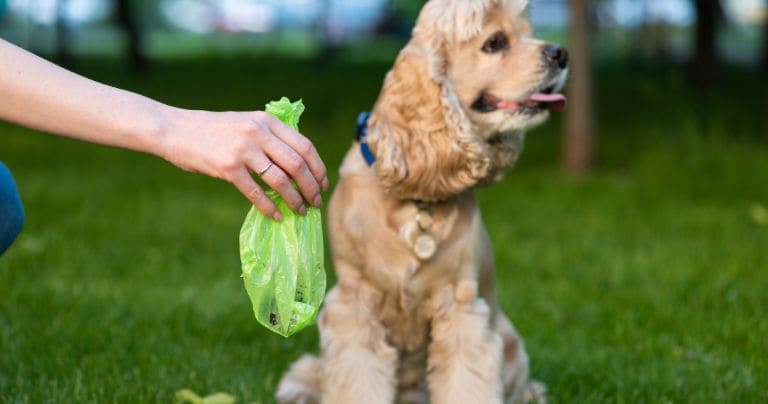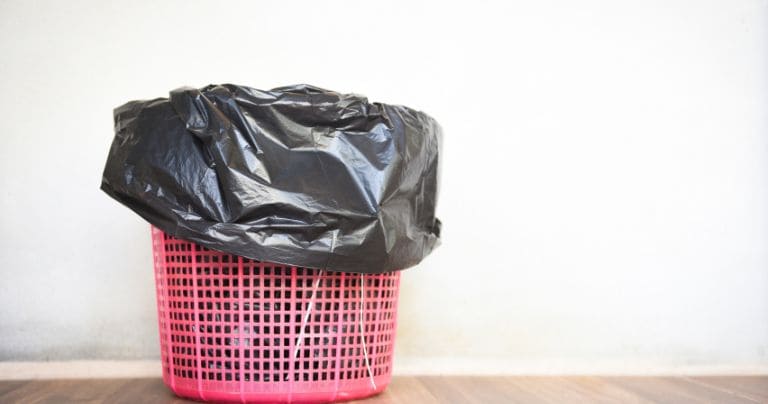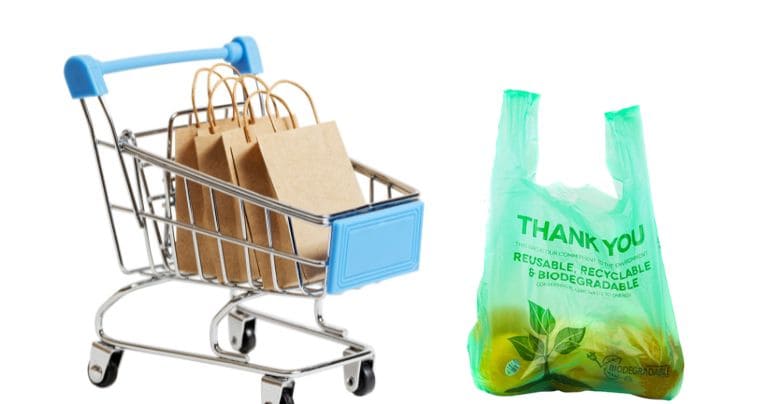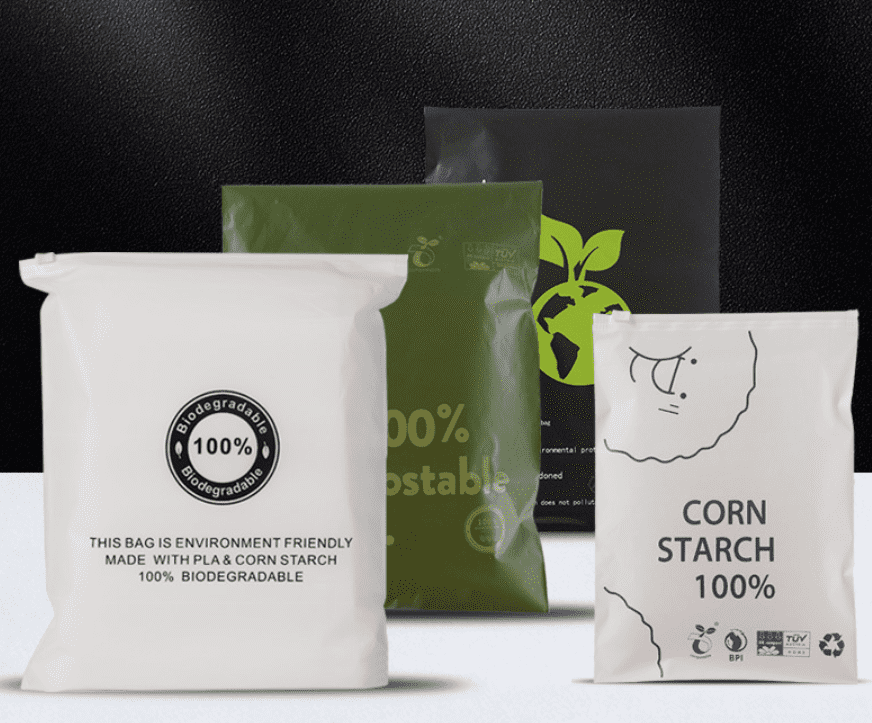Table of Contents
Hello, dog parents, sitters, and lovers! When it comes to picking the right dog waste bag, there are two main types of bags to choose from: biodegradable or compostable. Both have their own unique benefits, but it can be tough to decide which one is the best option for you and your pet. In this blog post, we will discuss the pros and cons of both biodegradable and compostable bags. After reading this, you will be able to make an informed decision about which type of bag is best for your pet needs!
Biodegradable and compostable bags are tear-resistant and water-resistant. Both of them can disintegrate over time. But, you need to pay attention to the difference. All compostable bags are biodegradable while most biodegradable bags are not compostable. Biodegradable is an umbrella term given to anything that can break apart in a natural environment. The main distinctions are their building blocks, the mechanisms, and the end product of that degradation. Compostable bags break apart into organic materials. Meanwhile, biodegradable bags cannot completely degrade leaving polluting chemicals.

Understanding the terms
First of all, let’s understand the terms biodegradable and compostable. Biodegradability refers to the ability of an object to degrade over time in a natural environment. It can be to the millimeter-size, microscopic, or molecular level. Biodegradable bags can only degrade to the microscopic size, resulting in microplastics.
On the flip side, compostable is the ability of organic material to decompose to the molecular level with the help of microorganisms. In a composting environment, the organic matters turn into carbon, water, and biomass, called compost. There are no toxic compounds left that can leach to the environment. You can use compost as a natural fertilizer for your plants or as a mulch.
What are biodegradable and compostable dog poop bags made of?
In essence, biodegradable dog poop bags are made of the same thing as your regular plastic bags. Their building blocks are usually derived from natural gas and petroleum. A chemical process turns these non-renewables into polymers. Those are Polyethylene terephthalate (PET), Polyvinyl chloride (PVC), and Polypropylene (PP). Biodegradable bags also labeled as bio-based are, in fact, made out of natural raw materials.
Plant sugars are used and processed into polymers like PET and PEF (Polyethylene furanoate). These plastic polymers are durable and made to last a long time. If so, how can they have biodegrading properties? Well, chemical or bio-additives are mixed with these polymers to promote fragmentation.
The main component to make compostable bags is plant-based polymers. The feedstock can range from beetroot, corn, cane sugar, cassava, and potato starch. A biotechnology process turns one of these materials into Polylactic acid (PLA). In the manufacturing process, Polybutylene adipate-co-terephthalate (PBAT) is sometimes used as a blend. It is a petroleum-based polymer with bio-degrading ability. The PLA, combined with PBAT and starch blend, creates compostable bags.
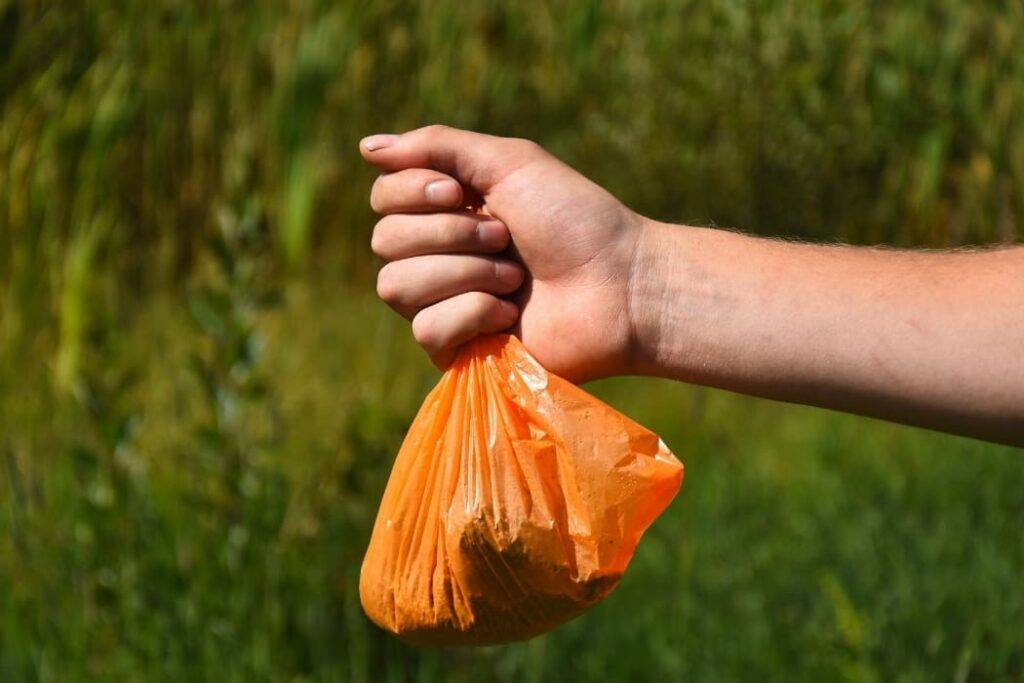
How do they decompose?
Imagine this scenario. You are taking a walk in a park with your fur buddy until all of a sudden, it is potty time. As you are always well-prepared, you take out a dog poop bag, pick up the excrement, and continue holding it until you reach the nearest trash bin. The following questions might have popped into your head once or twice. “My dog poop bag is biodegradable/compostable. I can just throw it in the bushes, right? This is not considered littering, right?” Wrong. Let me tell you why.
In the market, biodegradable dog poop bags are usually either photo-degradable or oxo-degradable. As mentioned earlier, these bags are like normal plastic bags, a little bit thinner, but concocted with a special degrading agent. Photo-degradable bags will break down into smaller particles under very long sun exposure. Meanwhile, it takes an oxidation process to deteriorate oxo-degradable plastics into microscopic fragments. None of them can fall apart to the molecular level. When you litter biodegradable bags or when they end up in landfills, it takes years for them to fragment into microplastics.
In contrast, compostable dog poop bags can break apart to the molecular level. But, they will not decompose if you throw them away in an open space or in an aquatic environment. These bags need a highly controlled environment. Plus, it takes 180 days for them to completely degrade. Microbes and fungi play big roles in the decomposition process. They are the ones who will digest the organic materials and turn them into compost. Moreover, you need to control some parameters to ensure good composting. There are aeration, temperature, moisture level, and the ratio of carbon and nitrogen. These factors are crucial to keeping the microorganisms happy and alive.
Is Dog Poop Compostable?
In principle, yes, you can compost dog poop. A lot of people have this misconception that they should not put dog waste in the composting bin. Well, dog poop is indeed considered a health hazard because it might contain parasites and bacteria. However, proper composting will kill all these harmful pathogens. By picking up dog waste, you help protect the soil and aquatic environments from contaminations. Composting canine waste also reduces its volume by half. A lot of studies about the safety of dog poop compost have been conducted. Rest assured, you can safely use dog waste compost to fertilize your house plants. The USDA (United States Department of Agriculture) has confirmed that they are safe to use and are not harmful to human health or the environment.
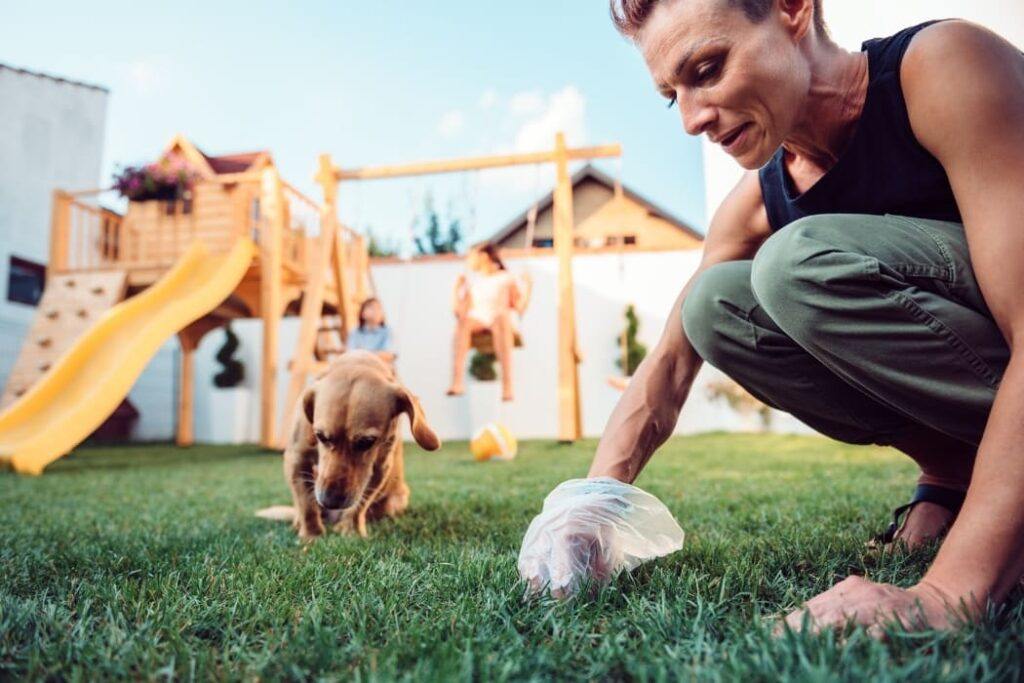
How to dispose of used compostable dog poop bags?
We have made it clear that you should never litter used compostable dog poop bags. The only way for these bags to decompose is by composting them along with your pup’s excrement. If you don’t have a composting bin, you can always throw them into the organic waste bin. You can also dispose of them at an industrial composting facility in your area.
Take note that you should never throw compostable bags in the recycling bin. Having them there will contaminate the entire batch of recyclables. It is not very cost-effective for recycling facilities to separate them. So, a contaminated batch will end up in a landfill or get burned.
Which one is better for the environment?
I get it. You love your pups just as much as you care for the environment. That’s why you are still reading this. Considering the amount of poop bags you throw away per month, you know that choosing the right bags is so important to minimize your environmental impacts.
Many studies have reported that biodegradable bags are not aligned with the mission to combat the global plastic crisis. Most of these bags are falsely marketed as “green”. In reality, they fragment into microscopic size, making them so hard to collect. To this day, microplastic contamination is one of the hardest environmental issues to solve. When ended up in a landfill, biodegradable dog poop bags will degrade over time. Thus, exposed feces might contaminate the air, water, and soil.
From cradle to grave, compostable dog poop bags are a better, greener alternative. These bags are made of plant-based material that can completely decompose without leaving any toxic residue. In proper condition, they are gone within 180 days or 25 weeks. By composting these bags together with the dog waste, you can help reduce the landfill capacity and methane emission into the atmosphere. On top of that, you can use the end-product of composting as a soil conditioner.
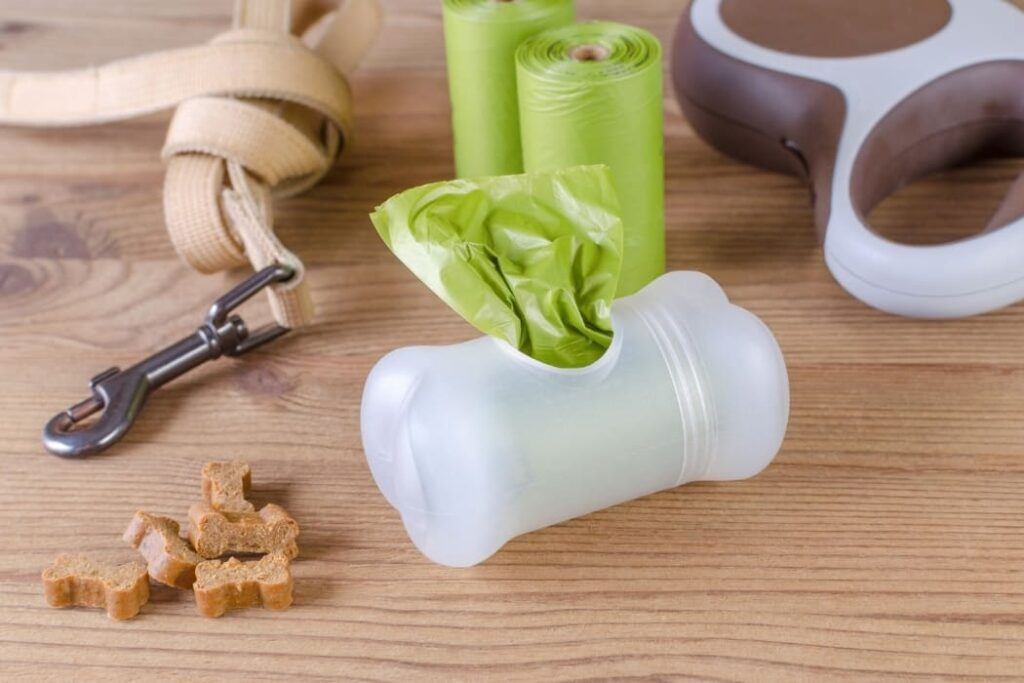
Pros and cons of each type of bag

My recommendation
We’ve discussed the two types of dog poop bags from all angles. In the end, I would recommend you to choose compostable bags over biodegradable ones. Not only are they made of renewable resources, but the result of the decomposition is also non-toxic to the earth and to our health. Unlike the counterpart, using compostable bags is a real solution to tackle the plastic pollution emergency.
Summary
Now, let’s do a recap. Biodegradable and compostable dog poop bags are not the same. Biodegradable dog poop bags are made of fossil-based polymers mixed with additives that induce fragmentation. Meanwhile, compostable bags are made of plant materials that can get digested by microorganisms’ activity.
None of them can wholly disintegrate in natural open space, therefore you should never litter. Biodegradable bags fragment into microplastics that are polluting the environment. Meanwhile, compostable bags break down into nothing but nutritious biomass. If you decide to dump them, make sure to put them in the organic bins or submit them to an industrial composting facility. All in all, compostable dog poop bags are the better choice to enclose and dispose of your pet’s waste.
